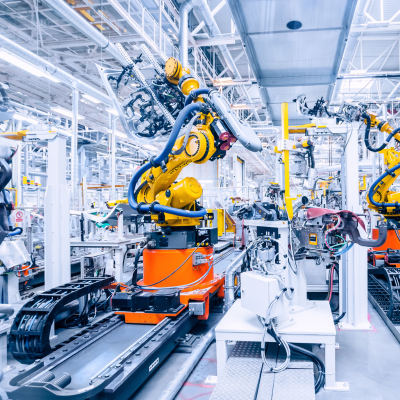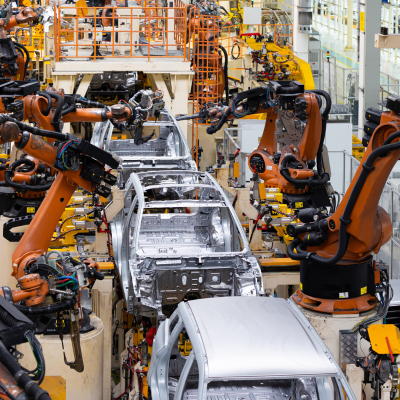Manufacturing Industry
Home > Manufacturing Industry
Manufacturing Industry
The manufacturing industry in India is a diverse sector with varying power requirements depending on the specific type of manufacturing. DG sets are critical for ensuring continuous production and preventing costly downtime. Here’s a breakdown of the requirements and compliances:
DG Set Requirements:
- Capacity and Redundancy: The required capacity depends on the size and type of manufacturing facility and the connected load of machinery, equipment, and processes. Redundancy is crucial for critical operations, with multiple DG sets and automatic transfer switches ensuring uninterrupted power supply.
- Quick Startup and Load Acceptance: DG sets should start quickly (within 10 seconds) and handle sudden load changes when heavy machinery or production lines come online.
- Fuel Efficiency: Manufacturing facilities often require DG sets to operate for extended periods during power outages, making fuel efficiency crucial for cost management and environmental impact.
- Remote Monitoring and Control: For large facilities or those in remote locations, remote monitoring and control systems enable proactive maintenance and quick response to issues.
- Sound Attenuation: Noise pollution can be a concern, especially in densely populated areas. Acoustic enclosures and proper placement are necessary to minimize disturbance.
- Harmonics Mitigation: Some manufacturing equipment can generate harmonics that disrupt power quality. DG sets with harmonic filtering capabilities may be required to ensure stable power supply.
Compliances:
- Emission Norms: DG sets must comply with the latest CPCB emission norms. Stricter norms may apply in areas with poor air quality or specific zones designated as ecologically sensitive.
- Noise Pollution: DG sets must adhere to noise level limits set by local authorities to prevent disturbance to surrounding communities and comply with worker safety regulations.
- Factory Act and Regulations: DG set installations in manufacturing facilities must comply with the Factories Act and associated regulations, including safety measures and worker health considerations.
- Fire Safety: DG set installations must meet fire safety regulations, including proper ventilation, fire suppression systems, and safe fuel storage.
- Building Codes: Compliance with building codes is essential for safe and legal installation of DG sets.
- Electrical Safety: DG set installations must meet all electrical safety standards and regulations.
- Registration and Permits: Depending on local regulations, DG sets may need to be registered with the electricity board or pollution control authorities.


Additional Considerations:
- Industry-Specific Requirements: Different manufacturing industries may have specific requirements. For example, pharmaceutical manufacturing may have stricter air quality standards, while heavy industries might require DG sets capable of handling high load variations.
- Maintenance: Regular maintenance is crucial for ensuring the reliable operation of DG sets. Manufacturing companies should have a comprehensive maintenance plan in place.
- Energy Management: Integrating DG sets with energy management systems can optimize energy usage and reduce costs.
Challenges:
- Cost: Meeting stringent emission and noise regulations can increase the cost of DG sets and their installation.
- Space Constraints: Finding suitable space for DG set installation can be challenging, especially in urban areas with limited space.
- Operational Efficiency: Balancing the need for reliable backup power with fuel efficiency and environmental considerations can be challenging.
The Future:
- Hybrid Solutions: Combining DG sets with renewable energy sources like solar power can enhance sustainability and reduce reliance on fossil fuels.
- Energy Storage: Integrating DG sets with battery storage systems can improve reliability and enable better load management.
- Microgrids: Implementing microgrids can further enhance energy efficiency and reliability in manufacturing facilities.
By understanding and complying with these requirements, the manufacturing industry in India can ensure continuous production, protect valuable equipment, and minimize their environmental impact.

